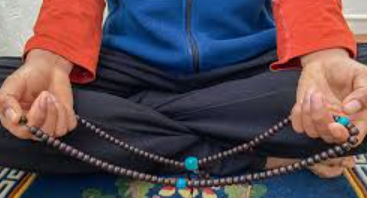Buddha globules, also known as mala globules or prayer globules, have been used for centuries in Buddhist, Hindu, and other spiritual traditions as a tool for contemplation and awareness. These simple strings of globules are much further than a beautiful accessory; they carry deep spiritual significance and serve as a practical aid for calming the mind, fastening attention, and cultivating inner peace. Whether you’re new to contemplation or looking to consolidate your practice, learning how to use Buddha globules for awareness can be an important step on your trip.
What Are Buddha globules?
A traditional mala consists of 108 globules, frequently made from wood, seeds, rocks, or chargers. The number 108 has spiritual significance in Buddhism and Hinduism, emblematizing absoluteness and the wholeness of actuality. In addition to the 108 globules, there’s frequently a larger “practitioner blob” or tassel at the end, which serves as a starting and ending point during contemplation.
How to Use Buddha globules for awareness Practice?
Find a Comfortable Space of Buddha Beads:
Choose a quiet space where you won’t be disturbed. Sit comfortably, either cross-legged on a cushion or in a chair with your base flat on the bottom. Rest your hands on your knees or in your stage, holding your mala gently.
Set an Intention before morning:
Set a clear intention for your practice. This could involve cultivating calmness, focusing on gratitude, or simply being present. Your intention will guide your contemplation and give meaning to the practice.
Hold the globules duly. Traditionally,
The mala is held in the right hand, draped over the middle cutlet. The thumb is used to count each blob by gently pulling it toward you. The indicator cutlet is not used, as it represents the pride in numerous traditions.
Choose a Mantra or Breath Practice
You may use Buddha beads with a mantra. Alternatively, you can focus on your breathing, using each bead as a reminder to inhale and exhale fully.
Move Through the globules:
You may use Buddha globules with a mantra. Alternatively, you can concentrate on your breathing, using each blob as a memorial to gobbles and exhale completely. Move through the globules, launching, and reciting your mantra, or take one breath per blob. After completing one blob, move to the coming. Continue this process around the mala until you reach the blob again. This repetitious meter helps settle the mind and consolidate attention.
Pause at the Buddha Beads

When you reach the Buddha globules, pause. Take a moment of gratitude for the practice and the clarity it brings. If you wish to continue, do not cross over the guru bead; instead, reverse the direction and continue counting.
Close with Reflection
After completing your meditation, spend a few moments sitting quietly. Reflect on your intention and notice how your mind and body feel. Carry this sense of mindfulness with you into your daily activities.
Tips for Effective Practice
Consistency matters: Even five minutes a day with your mala can create noticeable benefits over time.
Stay gentle with yourself: If your mind wanders, simply return to the bead in your hand and begin again.
Personalize your mala: Choose globules that resonate with you, whether for their material, color, or symbolic meaning. This creates a deeper personal connection to your practice.
Frequently Asked Questions (FAQ)
1. Do I need to be Buddhist to use Buddha globules?
No. While Buddha beads have spiritual roots in Buddhism and Hinduism, people of all backgrounds use them today as a mindfulness tool. You can adapt them to fit your personal meditation practice.
2. How many globules should a mala have?
Traditionally, a mala has 108 beads plus one guru bead. However, smaller versions with 27 or 54 beads are also used for shorter practices.
3. Can I use Buddha globules without chanting a mantra?
Yes. You can simply use each bead to focus on your breath, repeat a positive affirmation, or even practice gratitude with each count.
4. What materials are best for Buddha beads?
It depends on personal preference. Wooden malas are simple and traditional, while crystal or gemstone malas are chosen for their symbolic properties, such as rose quartz for love or sandalwood for tranquility.
5. How often should I use Buddha beads for mindfulness?
You can use them daily, even if just for a few minutes. Consistency is more important than duration, and regular practice will enhance your mindfulness over time.
Conclusion
Buddha beads or globules are a timeless tool that bridges spirituality and mindfulness. By incorporating them into your meditation, you create a structured yet gentle way to calm.



Leave a Reply